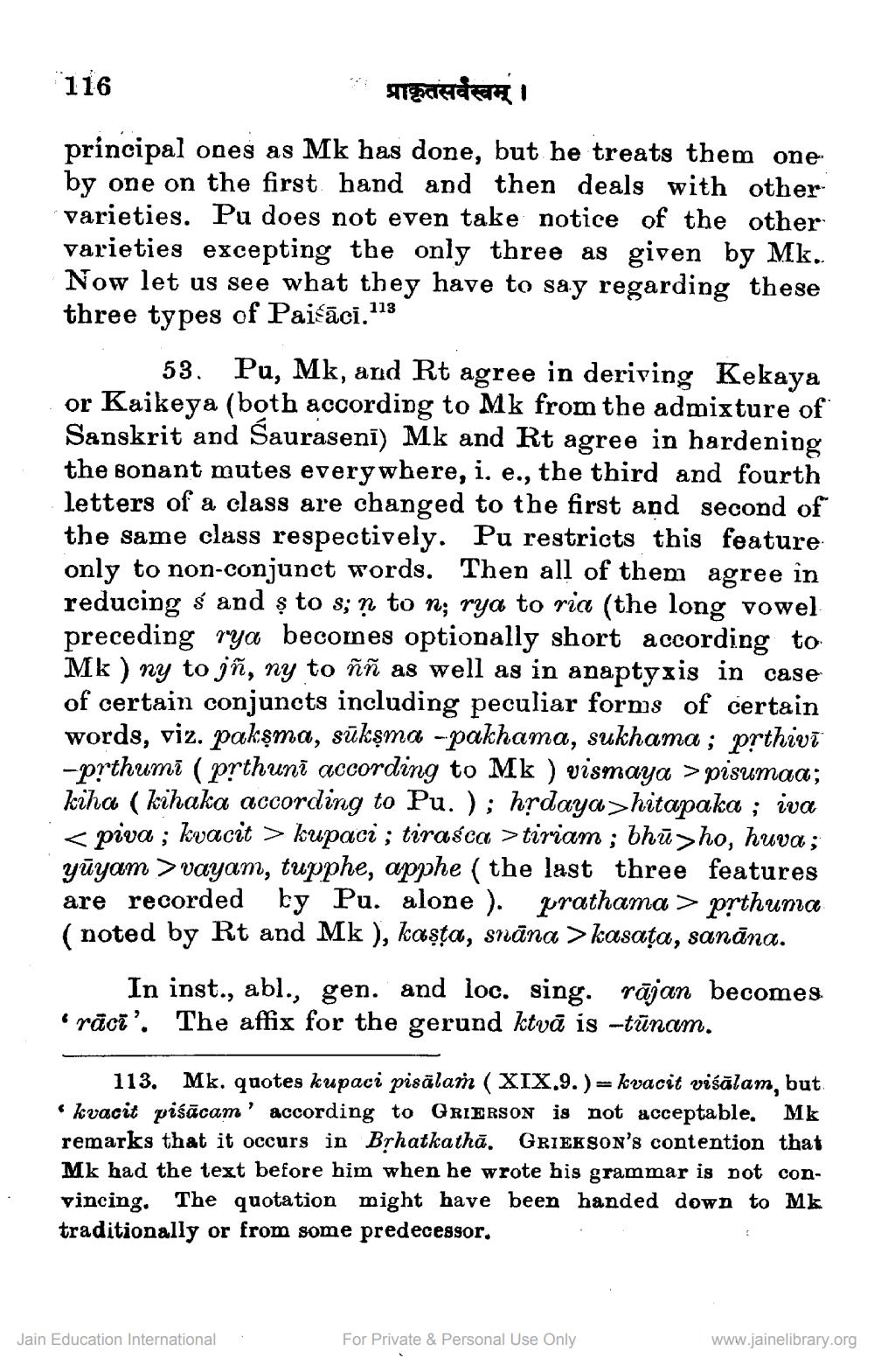________________
116
principal ones as Mk has done, but he treats them one. by one on the first hand and then deals with other varieties. Pu does not even take notice of the other varieties excepting the only three as given by Mk.. Now let us see what they have to say regarding these three types of Paisāci. 113
53. Pu, Mk, and Rt agree in deriving Kekaya or Kaikeya (both according to Mk from the admixture of Sanskrit and Saurasenī) Mk and Rt agree in hardening the sonant mutes everywhere, i. e., the third and fourth letters of a class are changed to the first and second of the same class respectively. Pu restricts this feature only to non-conjunct words. Then all of them agree in reducing s and ș to s; ļ to n; rya to ria (the long vowel preceding nya becomes optionally short according to Mk) ny to jñ, ny to ññ as well as in anaptyxis in case of certain conjuncts including peculiar forms of certain words, viz. pakşma, sūkşma -pakhama, sukhama; prthivi -p?thumi (prthuni according to Mk ) vismaya > pisumaa; kiha ( kihaka according to Pu.); hrdaya>hitapaka ; iva
< piva ; kvacit > kupaci ; tirasca >tiriam ; bhū>ho, huva; yāyam >vayam, tupphe, apphe (the last three features are recorded by Pu. alone ). prathama > prthuma ( noted by Rt and Mk ), kasta, snāna > kasata, sanāna.
In inst., abl., gen. and loc. sing. rājan becomes rācī'. The affix for the gerund ktvā is -tūnam.
113. Mk. quotes kupaci pisālam ( XIX.9.) – kvacit viśālam, but • kvacit piśācam' according to GRIERSON is not acceptable, Mk remarks that it occurs in Brhatkathā. GrieksON's contention that Mk had the text before him when he wrote his grammar is not convincing. The quotation might have been handed down to Mk traditionally or from some predecessor.
Jain Education International
For Private & Personal Use Only
www.jainelibrary.org




